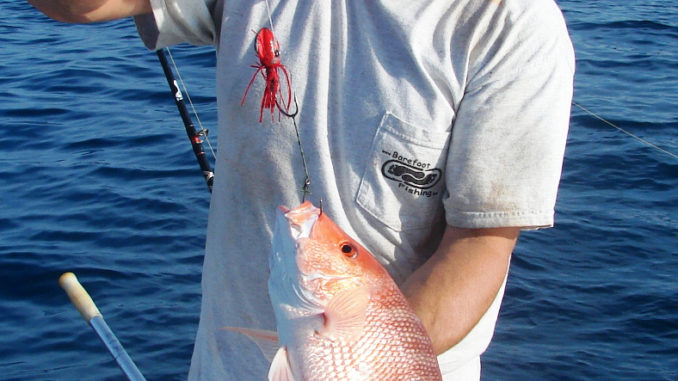
Red Snapper numbers better, but still no harvest allowed
The South Atlantic Fishery Management Council voted unanimously at its Dec. 6-10 meeting in New Bern, N.C., to eliminate the 5,000 or so square miles of ocean that was scheduled to be closed to all bottom-fishing, in part because of a promising report about the status red snapper.
The closure was part of Amendment 17A to the Grouper Snapper Fishery Management Plan passed on Dec. 3. It encompassed an area beginning roughly off Brunswick, Ga., south to Melbourne, Fla., from 90 to 240 feet deep after originally having its northern border drawn along the North Carolina/South Carolina border.
Fishermen have been telling biologists that the red snapper fishery was much better than the feds’ gloom-and-doom judgment. At the meeting, the SAFMC reviewed the most-recent stock assessment showed snapper in good-enough shape that the area should not be closed to all fishing to protect red snapper from discard mortality. However, the stocks were not healthy enough to reopen the fishery in the South Atlantic, so the moratorium on catching red snapper will continue.
“The Council considered a number of factors before deciding to eliminate the area closure off southern Georgia and the north/central coast of Florida,” said David Cupka, SAFMC’s chairman. “We considered the reductions required by the new stock assessment, the impacts of the current prohibition on red snapper, the reduction in fishing trips as documented by the most recent recreational data, comments received from hundreds of fishermen regarding the larger numbers of red snapper available and the effects of the downturn in the economy that have negatively impacted fishing activities.
“The Council will continue to closely monitor the (program) in place for red snapper to follow the results of the continued moratorium on the harvest of red snapper,” Cupka said. “We are hopeful that the stock assessment scheduled for 2013 will show a marked improvement in the red snapper stock and managers will be able to allow some harvest as the stock continues to rebuild.”
The area closure would have prevented recreational and commercial fishing for 73 species of snappers, groupers, grunts, triggerfish, and other species in the snapper-grouper management complex that commonly co-occur with red snapper.
According to the recent stock assessment, a 70-percent reduction in fishing mortality – including dead discards – is required to end overfishing for red snapper. It was decided that the reductions in effect have possibly been greater than expected, and the decline in recreational red snapper mortality under the moratorium during 2010 may be greater than initially estimated. The most-recent preliminary data from the Marine Recreational Information Program (MRIP) for the private and charter sectors, including January through August 2010, show a 33-percent decline in fishing trips in the South Atlantic region compared to 2007 to 2009 and about an 80-percent decline in red snapper mortality.
The MRIP data proved to SAFMC members that the reduction in effort was consistent with fishermen’s reports and possibly reflects the current economic downturn, while the decline in mortality may reflect fishermen’s efforts to avoid red snapper. By incorporating the mortality reductions observed in the 2010 preliminary MRIP data, it is possible the current moratorium could provide as much as a 77-percent reduction in total mortality.




Be the first to comment